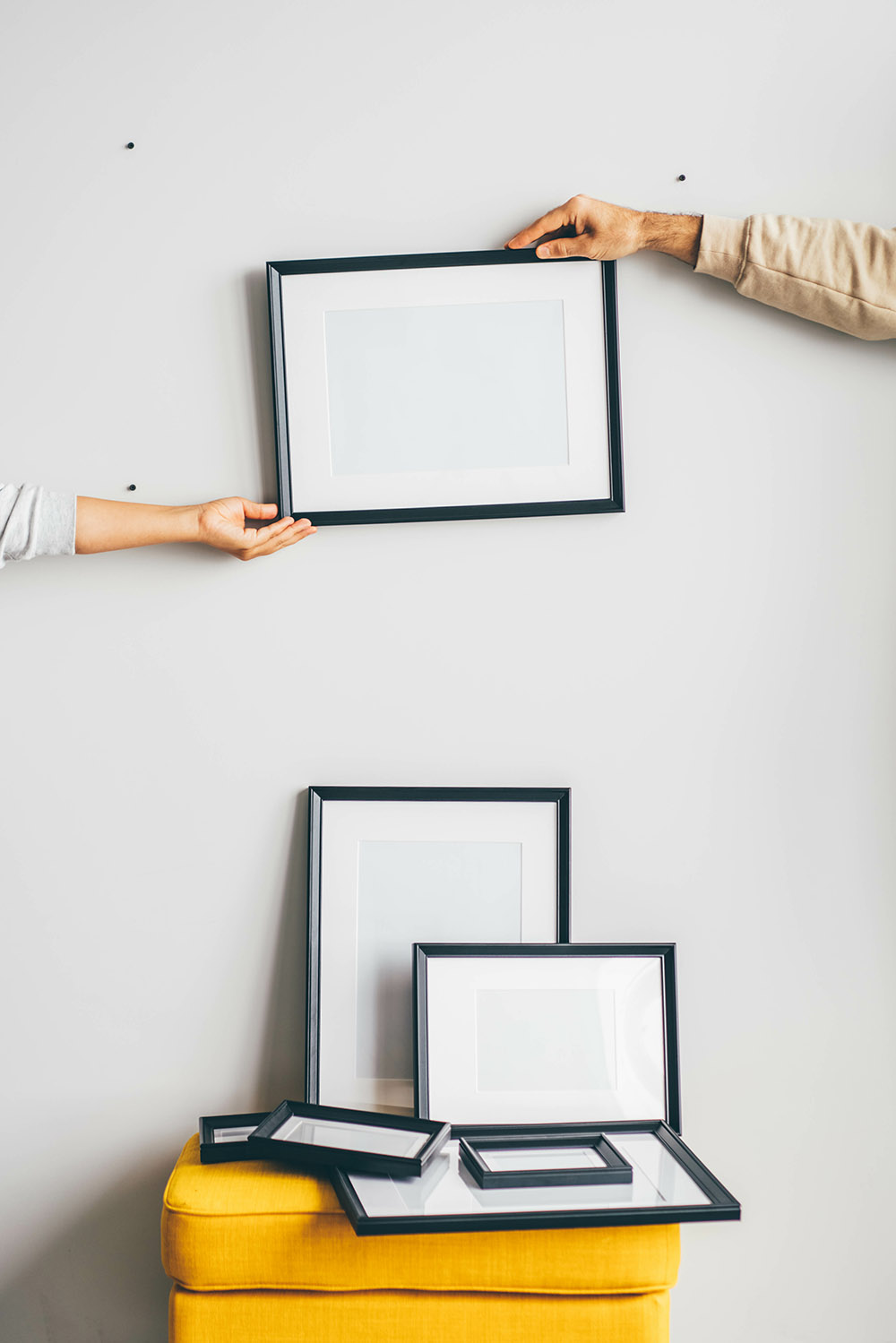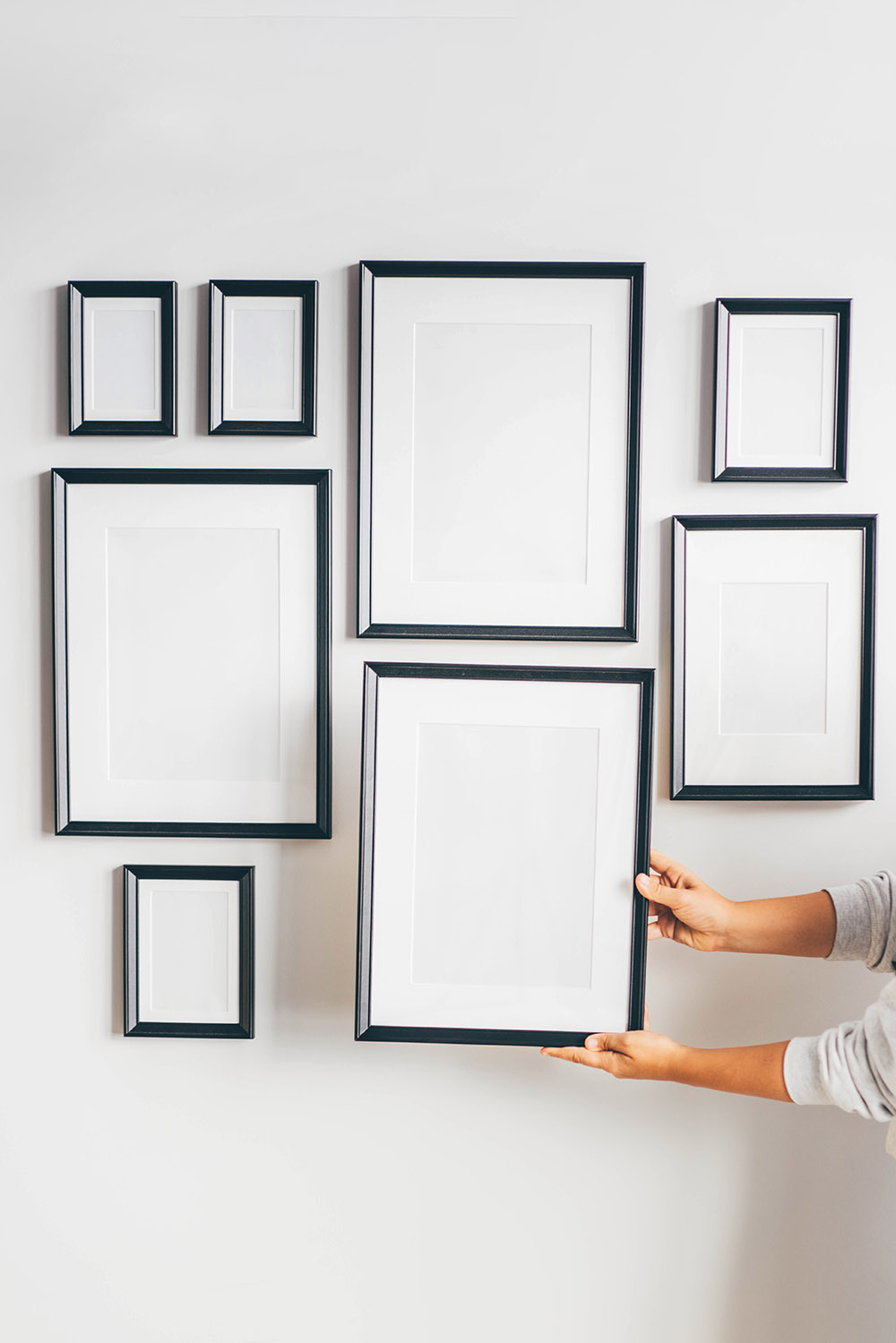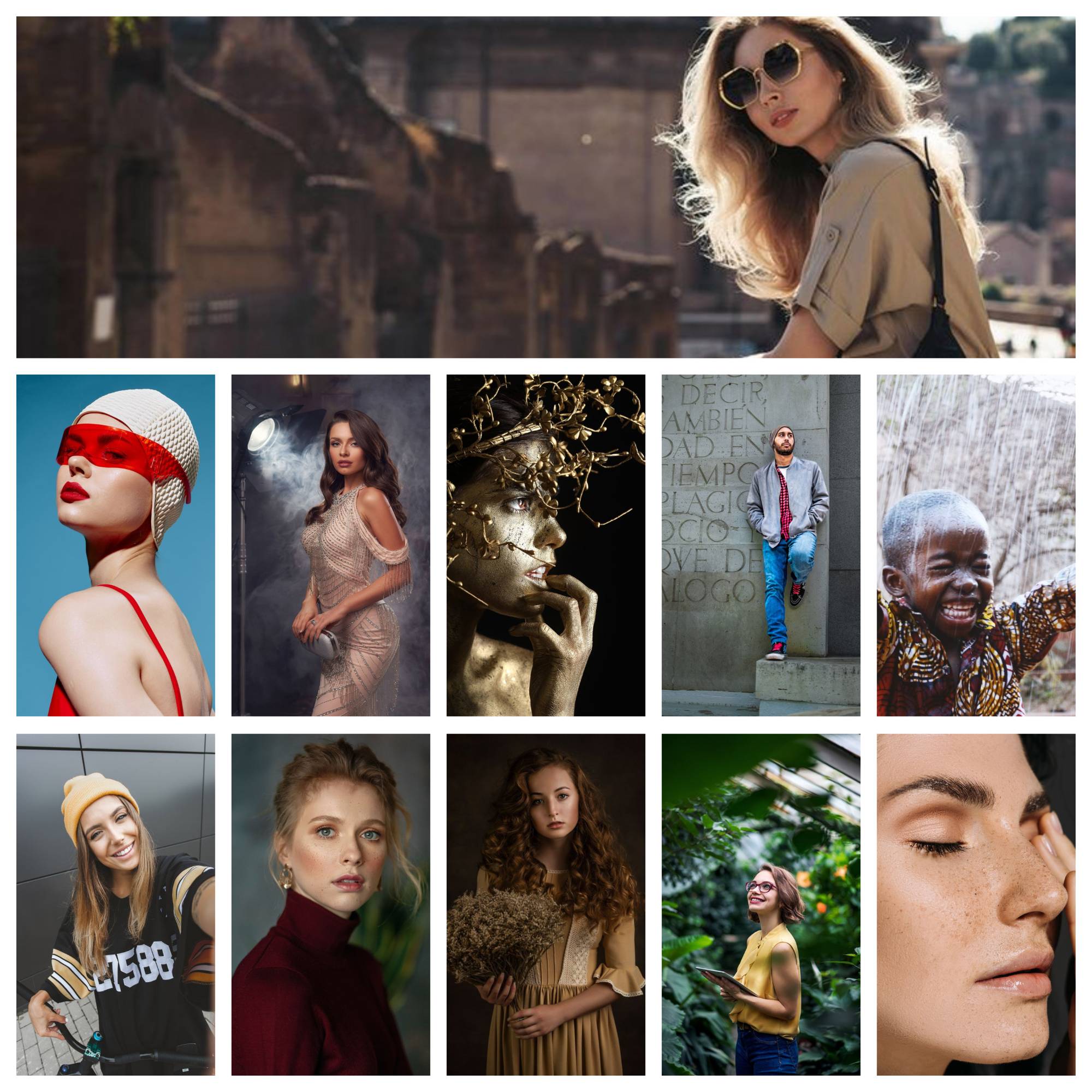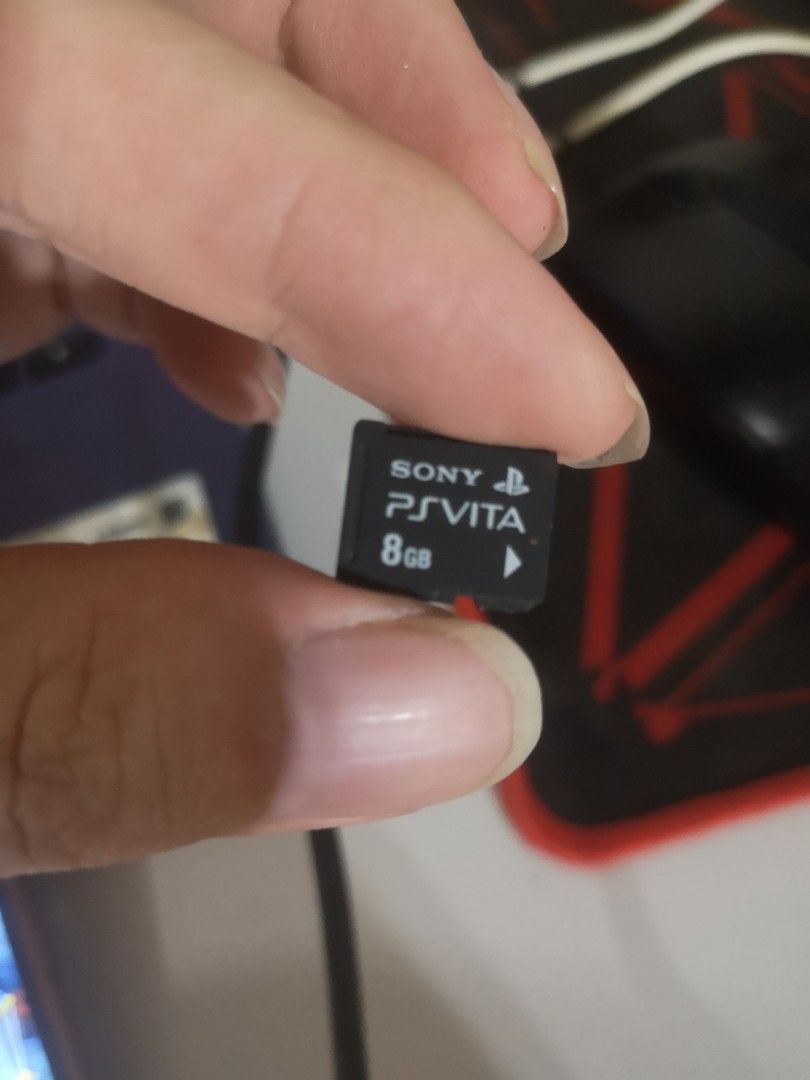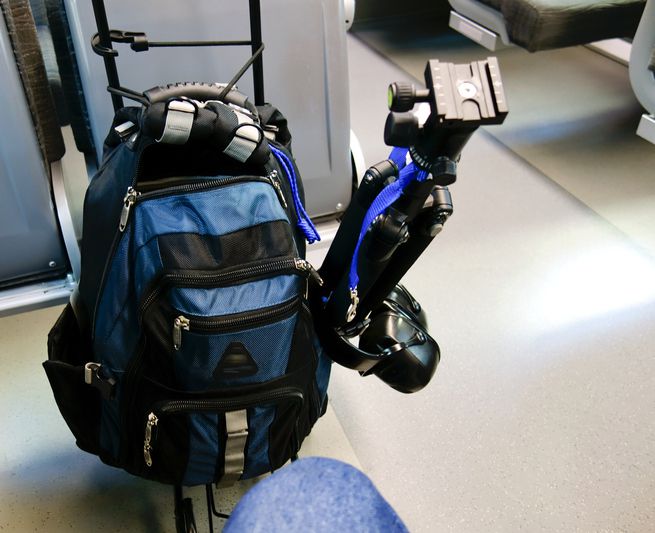Have you ever looked in the mirror and then at a photo of yourself, feeling like you look completely different? You are not alone! This common phenomenon has left many people confused. As someone who lives and breathes photography, we could say that different reflection mechanisms and external factors have fueled this misconception.
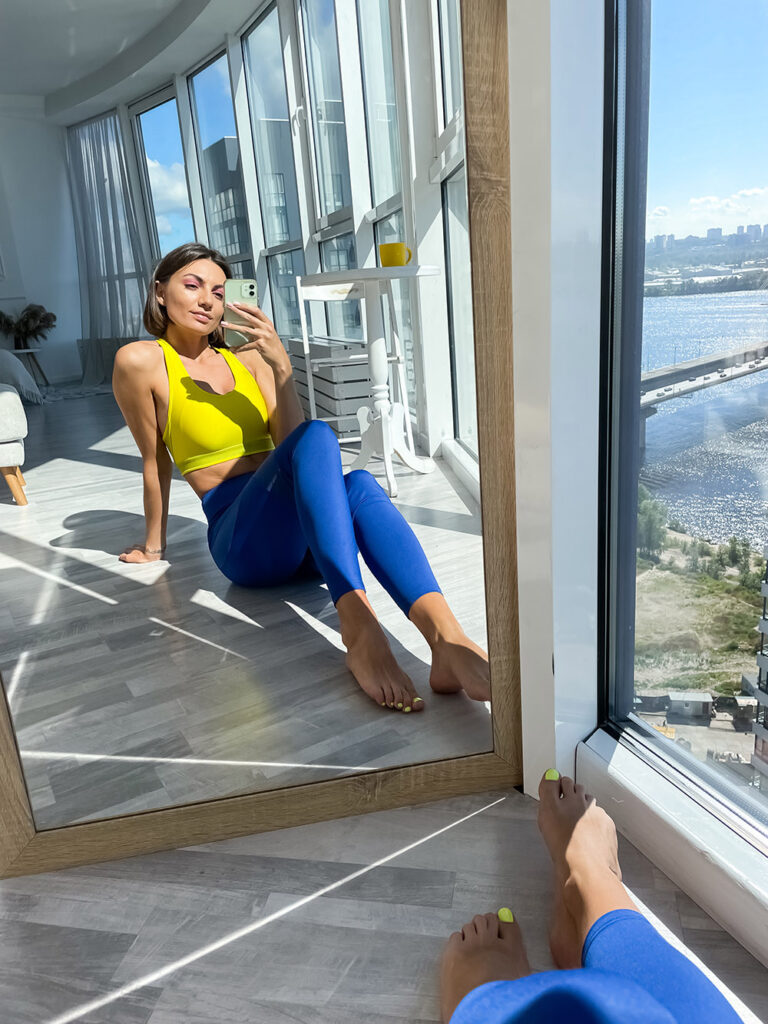
The question is: Is a mirror or camera more accurate when portraying yourself? Dive into this blog to find the answer to this mystery.
In this article:
Mirror vs. Camera Image: A Brief Explanation
Mirrors reflect light and create an inverted representation of objects. There are two primary types: flat and curved mirrors. The first option features a plane surface, showing you a version of yourself where your left and right sides are reversed.
Meanwhile, curved mirrors, whether concave or convex in design, introduce slight distortions to reflections. As a result, our image appears slightly compressed or elongated.
Cameras capture our image differently. Light enters the lens and gets processed to create a digital picture. Environmental conditions, especially lighting conditions, affect photography quality.
Camera settings such as ISO, shutter speed, and aperture distort perspectives. For example, the rear lenses can capture finer details than the front ones, thanks to their higher resolution. Some modern smartphones with wide-angle lenses can make objects near the edges appear wider or stretched, changing how we look in photos.
Which Is More Accurate: Mirror Or Camera?
The truth is neither flat mirrors nor cameras show us exactly how we look. Both methods are susceptible to distortions influenced by various factors. Mirror images offer self-perception reflections (when reversed), while camera photos capture how others perceive us.
In detail, the inverted presentation in the mirror presents a different perspective on personal characteristics. However, mere exposure and other effects (discussed below) send a sense of familiarity and comfort with our reflection to the brain.
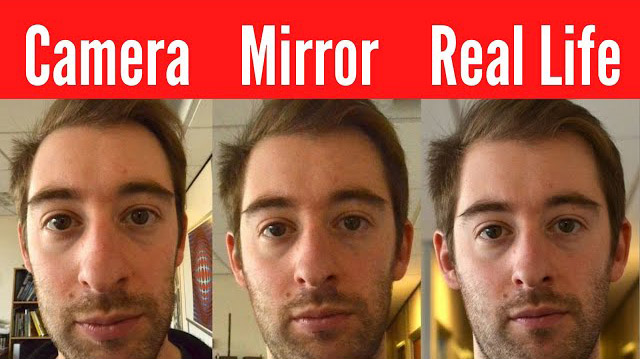
Remember that the angle and distance from the mirror and its surface can distort your perception. For example, some studies have shown that clothing stores intentionally install ‘Skinny Mirrors’ to create the illusion of a taller and slimmer body shape to enhance customers’ satisfaction.
Cameras capture how others see us, but the lens can be a tricky thing. Environmental factors like lighting can affect the final image. Plus, photos are 2-dimensional, which means they can’t show the full depth of our faces. This can sometimes make our features look a little different, like a wider nose from a certain angle.
Why Do I Look Better In The Mirror Than In Camera?
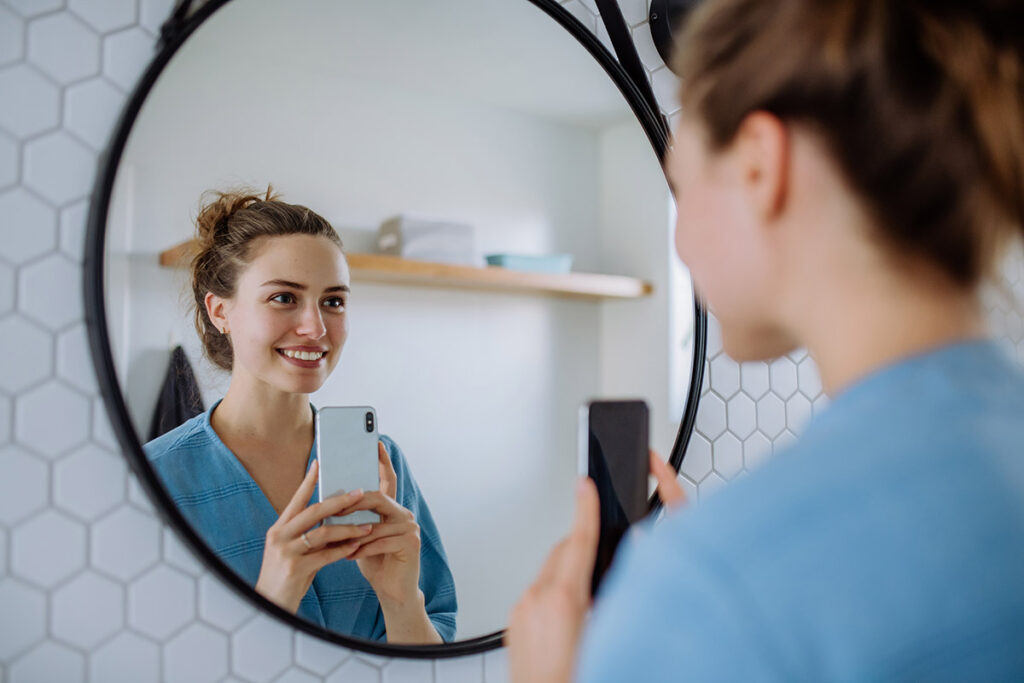
Mere Exposure Effect
This effect is simply a psychological phenomenon that occurs when people become fond of familiar things. Scientists have discovered that it develops in various situations, such as music, brands, and facial perception.
We perceive ourselves as more attractive in the mirror because familiarity shapes our discernment. This sense of comfort breeds interest and a positive association with our mirror image. The longer we see ourselves in the mirror, the more our fascination grows.
Direct Management
We tend to change our body language when dissatisfied with the reflection. Experts have revealed that people unconsciously adopt postures or expressions to flatter their beauty. The dynamic nature of a moving image adds a sense of vitality and captivation.
Meanwhile, cameras can capture us in candid moments. These spontaneous shots may not show off your most flattering angles, which can lead to a temporary dip in confidence.
Some individuals even zoom in on their photos to look for flaws that can dampen their mood. In real-life interactions, we tend to shift our focus to the whole person rather than imperfections like pores or scars.
Frozen Face Effect
This term refers to when our facial expressions appear frozen at a certain moment. When we do not express our emotions, others and even we might assume that our faces lack vitality and energy.
While facial muscles convey emotional and social signals, the camera fails to capture the essence. As a result, these still images fail to deliver our emotional facet, making them less appealing.
Dissimilarly Face Shape
We stare at ourselves in the mirror from a straight-on angle, so we might mistakenly believe our faces are perfectly symmetrical. But photos can reveal a different story – we might notice our features aren’t exactly identical on both sides.
Since photos are two-dimensional (flat), they can’t capture the full depth we see in a mirror. Through our research, the tilt of the nose appears the most different in mirror images compared to how you see it in digital photos.
Exaggerated Expectations Of Physical Beauty
An interesting study showed that people tend to overestimate their own attractiveness. The researchers manipulated some original photos into flattered versions and asked participants to find their accurate representation. Surprisingly, they believed that modified photos showed their accurate look.
Photographer Michael Levy also shares a similar opinion. He suggests that we naturally strive for the most attractive facial angle and look in the mirror from this viewpoint. We also tend to perfect our personal attributes to satisfy our perception.
Environmental Factors
While cameras capture a moment instantly, they still reflect the specific lighting conditions, surroundings, and environment. These factors all significantly impact our appearance. Whether negative or positive, it deviates from our actual appearance and the inverted presentation. This unfamiliarity may create a new awareness that sometimes lets us down.
For instance, lighting is a major factor that makes or breaks an image. While natural light is often recommended, the scorching sun might blur our facial features. If we lack posing experience, our photos can not come out as appealing as what you might see in a magazine.
Meanwhile, our brain can adjust to the lighting in the mirror, so we easily ignore the small changes and find no difference in our appearance.
Similarly, space is an external factor that influences our perception. Experts have reported that we often stare at the mirror in a safe environment, such as a dressing room or home. This ideal setting makes it easier for us to embrace the reflection.
On the contrary, standing in front of the camera creates a certain pressure, especially in crowded spaces. It comes with difficulties that cause facial muscles to stiffen (similar to the frozen face effect mentioned above). As a result, the photos may look unnatural and stiff.
Important note: We often see better reflections on mirrors than photos due to the senses of familiarity and comfort under different effects. However, this does not always hold true. The impact of technical factors may change the game. From our experience, using a long lens makes your face look slimmer. And skilled photographers have several techniques to satisfy their clients in shootings.
Valuable Tips For Looking Good In Photos
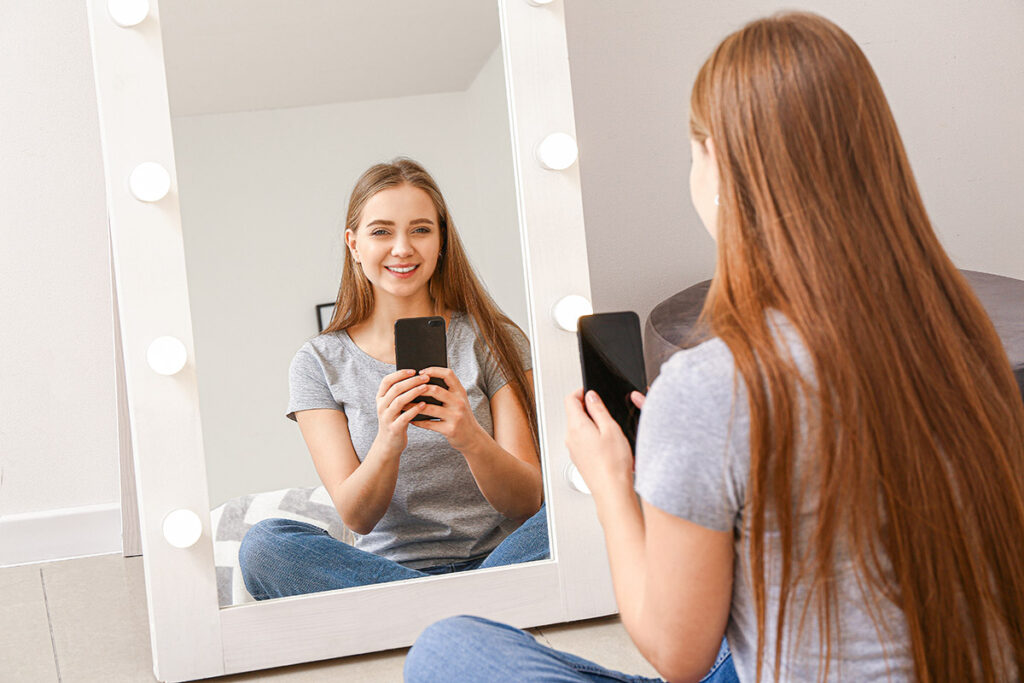
While the advancement of technology facilitates photo editing, you can have amazing moments in front of the camera without the need for filters or editing techniques. Try our tips to present your best self when taking photos:
Shoot under good lighting settings
As mentioned above, the role of lighting in photography is unparalleled. Whether taking selfies, shooting in a studio, or outdoors, favorable light accentuates the contours of your face and body.
Experiment with different conditions and directions to find the accurate settings for your skin tone and physical features. Trust us, every small change hits differently. Find places with natural lighting or invest in high-quality lamps with a CRI above 80.
Know your best facial angle
Very few people possess the golden ratio on their faces; instead, most have asymmetrical shapes where one side is considered more attractive than the other. Hence, identify your best angle and make it your go-to pose.
Try tilting your head slightly to each side, taking two selfies, and comparing them to see which shines best. Our advice is to reveal your jawline; doing so adds depth to your facial features and enhances the overall allure of the photos.
Relax and act
Relax and show some emotion! How can we take a cheerful photo with a stressed face? Take a deep breath, relax, and allow yourself to shine through.
When you take group photos, connect with your fellow friends. If you go solo, squint your eyes and smile. Think about the positive things around you, such as your loved ones, pets, or upcoming vacation. Happiness makes your eyes sparkle and brightens the frame.
Change your poses
Constant body movements add more flair to your photos. For beginners, there are a few basic rules: stand up straight, pull your shoulders back slightly, and tuck your chin. Once you feel confident in front of the camera, experiment with more styles, such as “chick wing” or candid poses.
Benefit from makeup and good clothing.
Makeup and outfits contribute to your perfect look. For example, putting on lipstick glorifies your plump lips, while eyeliner adds depth to your eyes. Do not apply makeup that is too thick and dark compared to your skin tone.
Similarly, choose clothes that fit well and flatter your figure. The right options boost your confidence, while ill-fitting or uncomfortable outfits make you uncomfortable.
See more: How To Make Your Camera Quality Better
FAQs
Are Mirror Selfies Accurate?
Mirror selfies are still distorted by external factors. However, they can provide more accurate images than traditional selfies.
How Can I See My Actual Representation?
Place two mirrors in front of you so their edges touch each other. This setting creates a right angle, like how you would open a book. In this case, the mirror reflects your entire face as others see you.
Conclusion
Both mirrors and cameras provide true reflection images in different situations. However, personal awareness plays a key role in how you and others perceive the image. Regardless, always feel confident about your appearance, and your beauty will shine in every photo.

